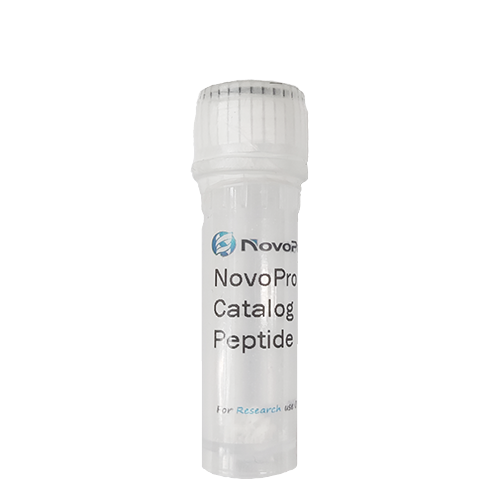Hexarelin peptide
Not For Human Use, Lab Use Only.
Cat.#: 300009
Special Price 356.50 USD
-
Product Name
Hexarelin peptide
-
Documents
Batch to batch variation of the purity
-
Sequence Shortening
H-His-D-2-Me-Trp-Ala-Trp-D-Phe-Lys-NH2
-
Length (aa)
6
-
Peptide Purity (HPLC)
98.43%
-
Molecular Formula
C47H58N12O6
-
Molecular Weight
887.05
-
Source
Synthetic
-
Form
Powder
-
Description
Hexarelin is also named: Hexarelin. CAS NO.: 140703-51-1. Hexarelin (Hexarelin Acetate) is a synthetic hexapeptide in the growth factor family which stimulates the release of growth hormone (GH) and does not interfere with the body's ability to produce its own GH. Structurally, Hexarelin (Hexarelin Acetate) is similar in structure to GHRP-6 but without the appetite increase because of its inability to drastically increase Ghrelin levels which is responsible for the increased appetite and quicker gastric emptying. Hexarelin is a synthetic growth hormone secretagogue made from six amino acids. It contains powerful growth hormone releasing properties in the human body. Hexarelin in studies over a certain period has shown that it reduces visceral fat. Hexarelin (Hexarelin Acetate) like other Growth Hormone Releasing Peptides is most effective synergistically when administered with GHRH such as Sermorelin or Modified GRF 1-29. The increase of circulating GH through Hexarelin use causes levels of Insulin-Like Growth Factor (IGF-1) to rise in the liver. IGF-1 is the prime cause of muscle growth in response to GH stimulation. Users of IGF-1 typically experience increased strength and muscle mass, as well as a very pronounced fat loss.
-
Storage Guidelines
Normally, this peptide will be delivered in lyophilized form and should be stored in a freezer at or below -20 °C. For more details, please refer to the manual: Handling and Storage of Synthetic Peptides
-
References
- Deghenghi R, Cananzi MM, Torsello A, Battisti C, Muller EE, Locatelli V. GH-releasing activity of Hexarelin, a new growth hormone releasing peptide, in infant and adult rats. Life Sci. 1994;54(18):1321-8.
-
About TFA salt
Trifluoroacetic acid (TFA) is a common counterion from the purification process using High-Performance Liquid Chromatography (HPLC). The presence of TFA can affect the peptide's net weight, appearance, and solubility.
Impact on Net Weight: The TFA salt contributes to the total mass of the product. In most cases, the peptide content constitutes >80% of the total weight, with TFA accounting for the remainder.
Solubility: TFA salts generally enhance the solubility of peptides in aqueous solutions.
In Biological Assays: For most standard in vitro assays, the residual TFA levels do not cause interference. However, for highly sensitive cellular or biochemical studies, please be aware of its presence.
-
Molar Concentration Calculator
-
Dilution Calculator
-
Percent Concentration Calculator
Mass (g) = Concentration (mol/L) × Volume (L) × Molecular Weight (g/mol)
Related Products / Services
• Peptide Services: NovoPro's peptide synthesis services include standard chemical peptide synthesis, peptide modification, peptide libraries, and recombinant peptide expression.
• Standard Peptide Synthesis: NovoPro offers quality peptides at the most competitive prices in the industry, starting at $3.20 per amino acid. NovoPro provides PepBox – Automatic Quote Tool for online price calculation.
• Peptide Modifications: NovoPro offers a wide range of peptide modification services including isotope labeling (2H, 15N, and 13C), multiple disulfide bonds, multiple phosphorylations, KLH, BSA, ovalbumin, amidation, acetylation, biotin, FITC, etc.
Please note: All products are "FOR RESEARCH USE ONLY AND ARE NOT INTENDED FOR DIAGNOSTIC OR THERAPEUTIC USE"

